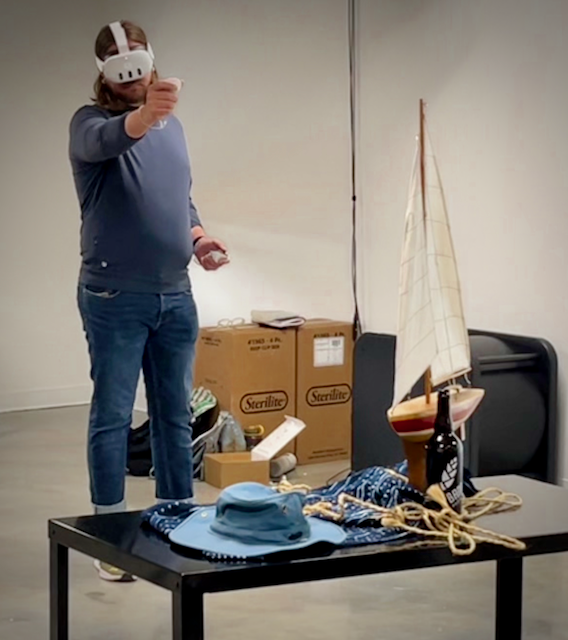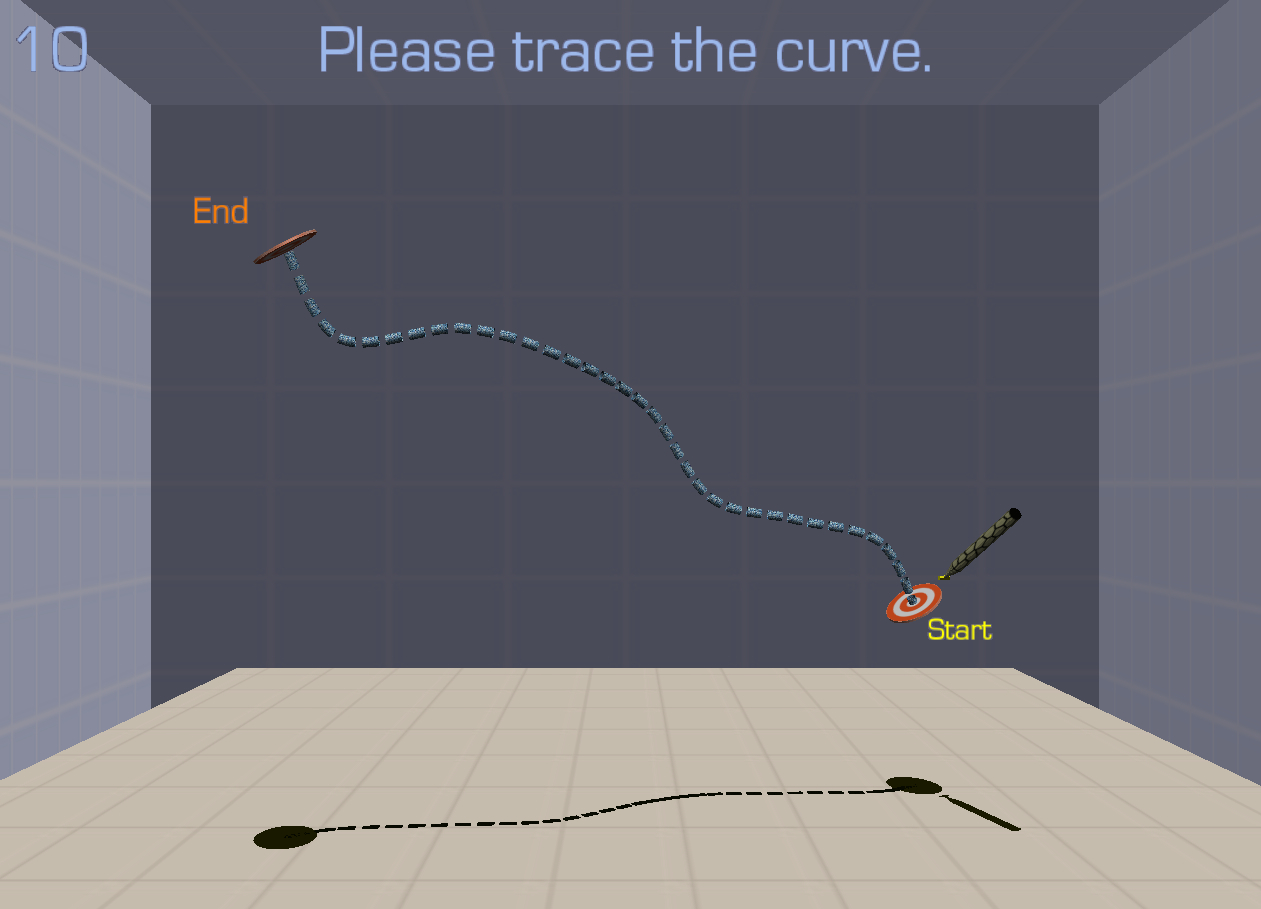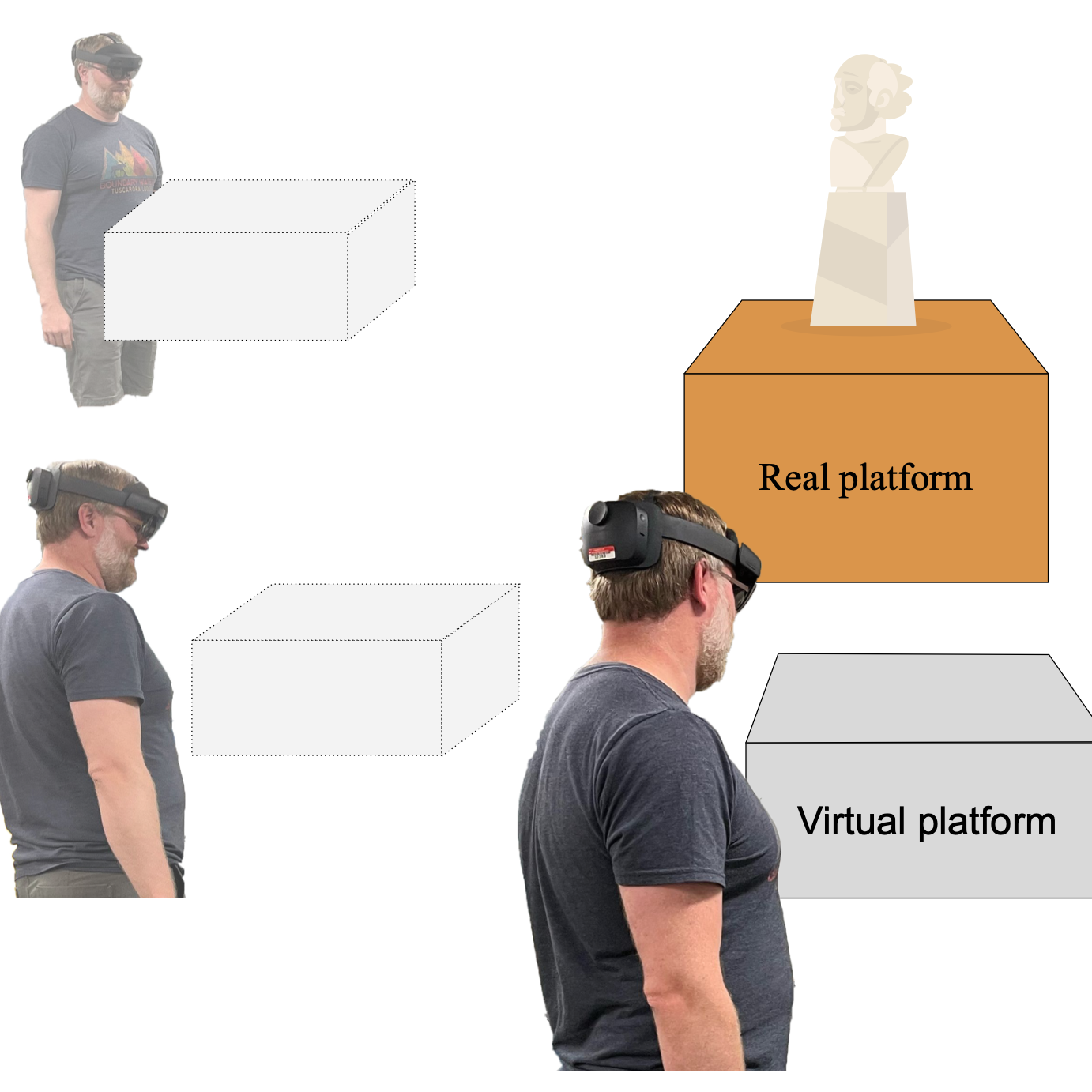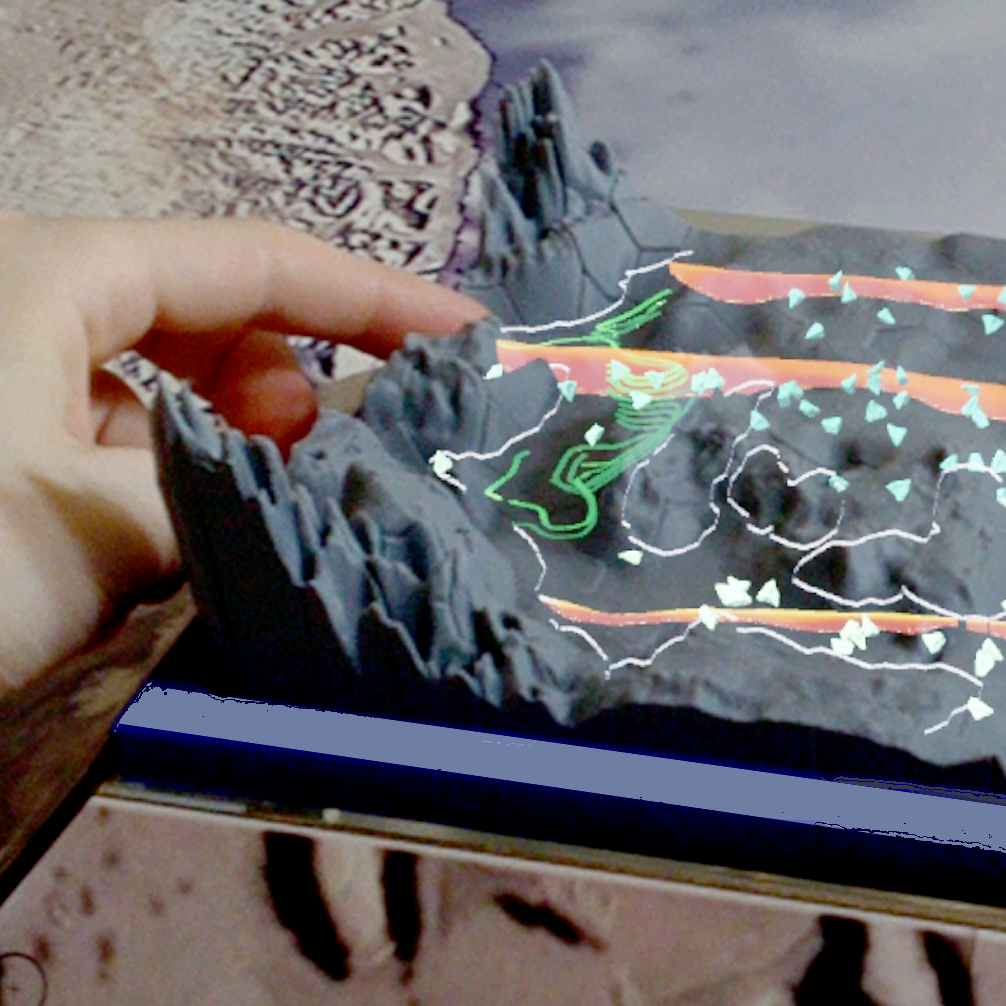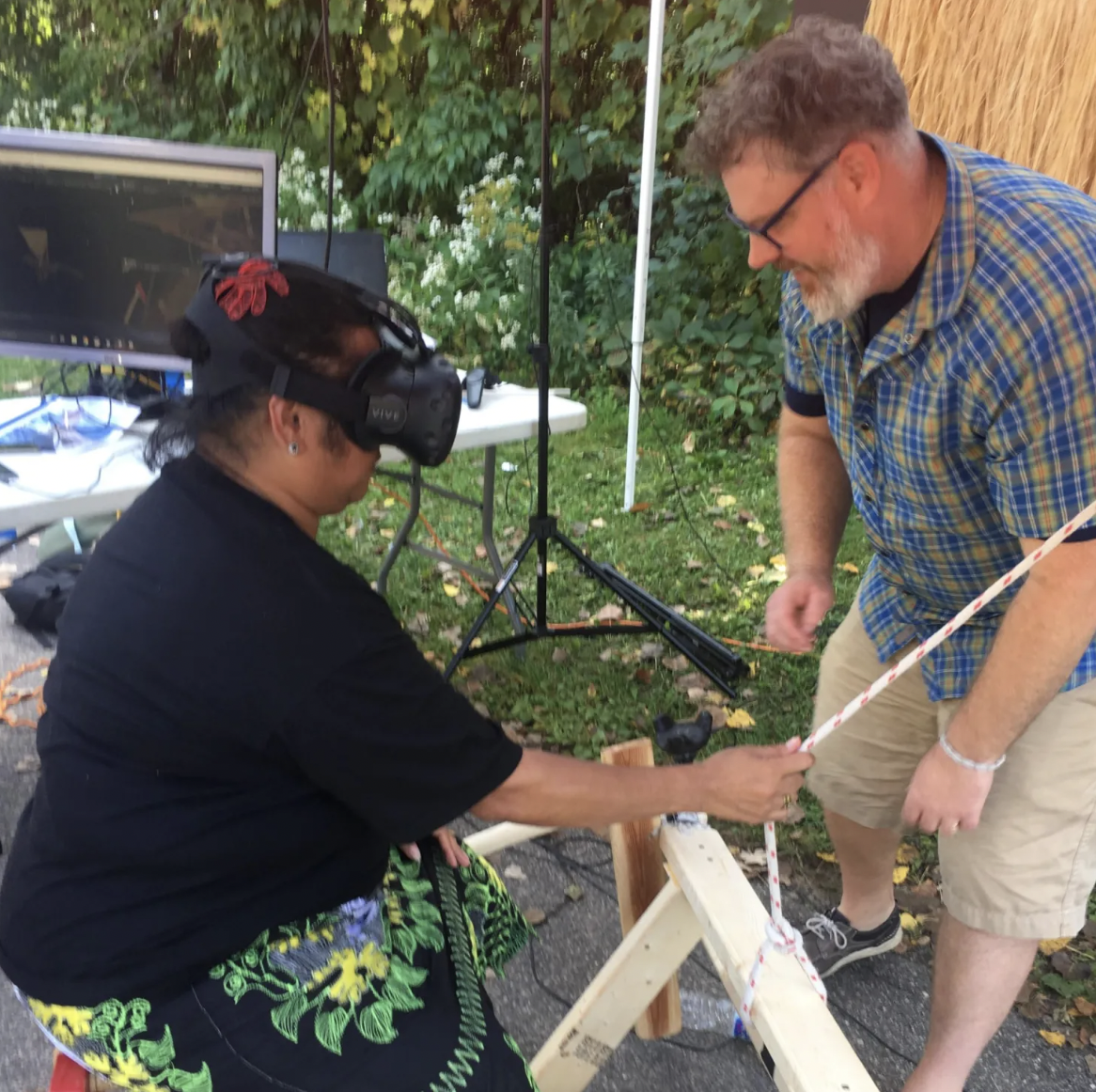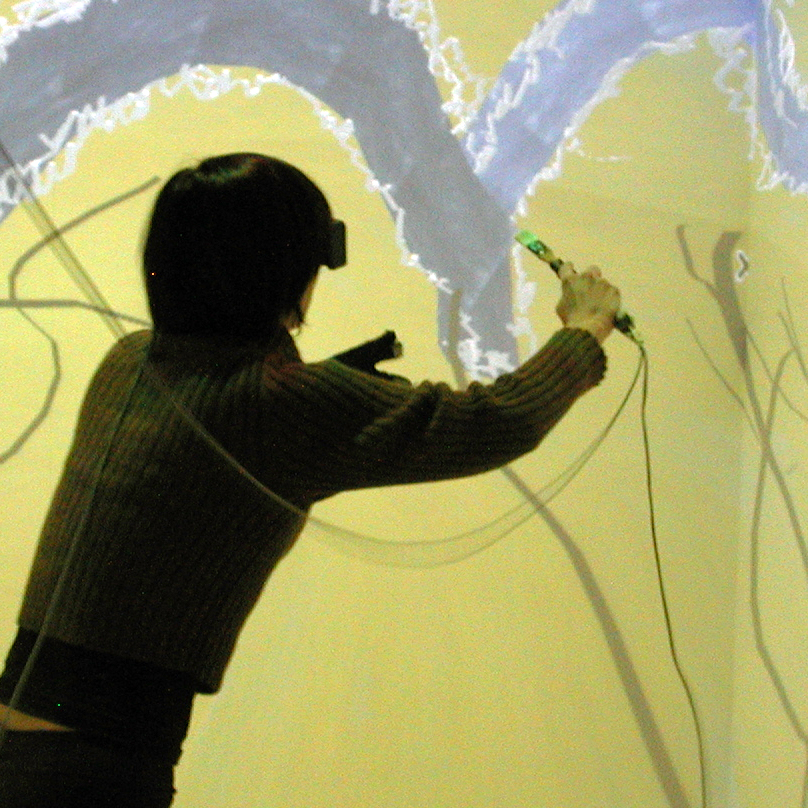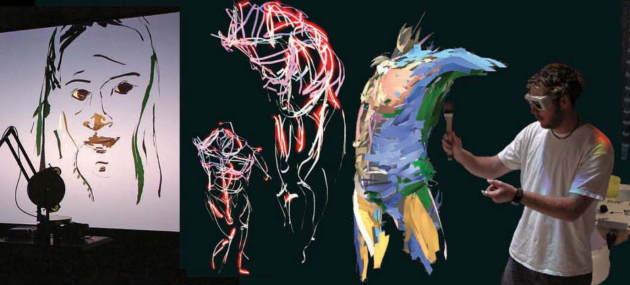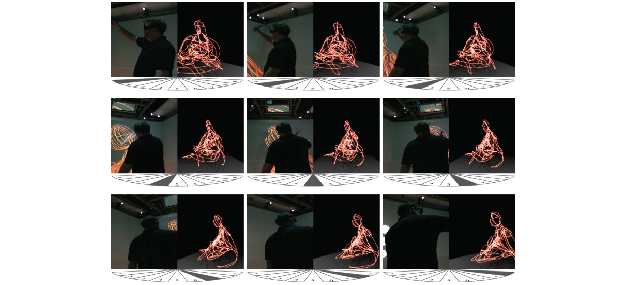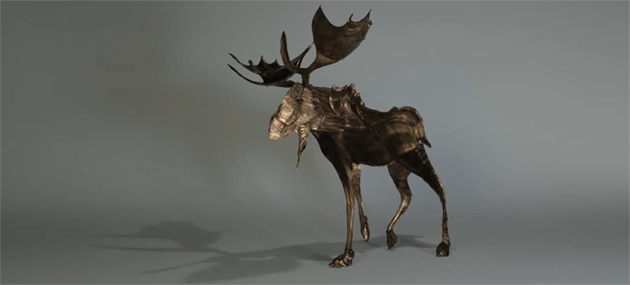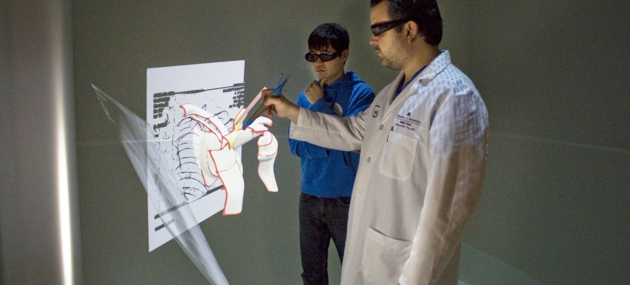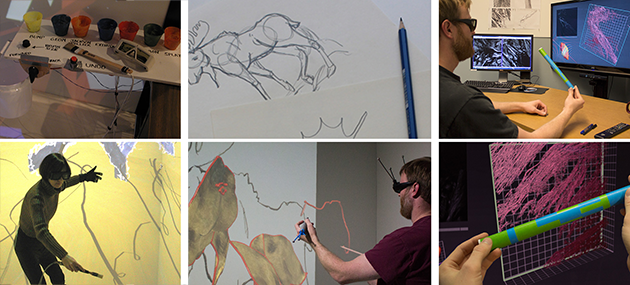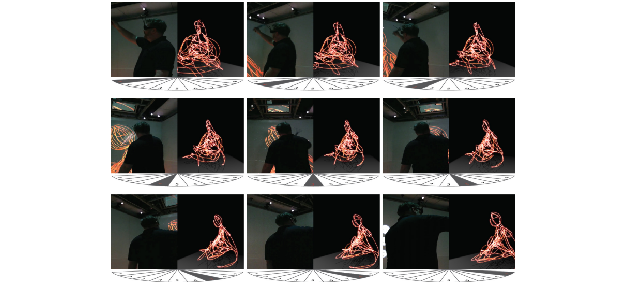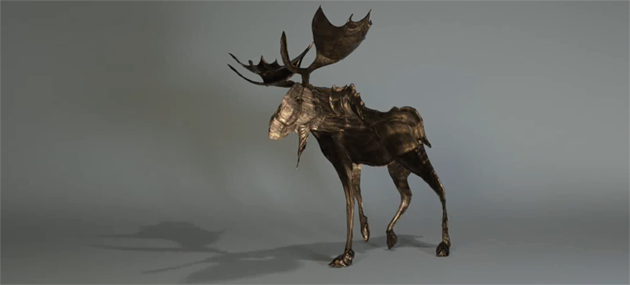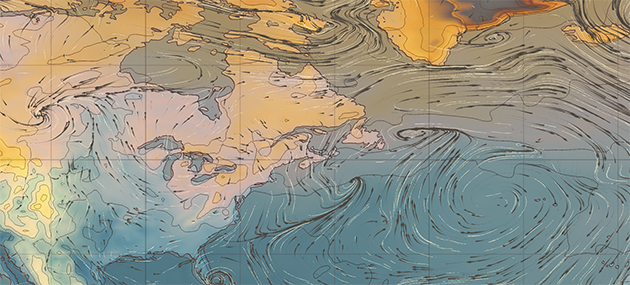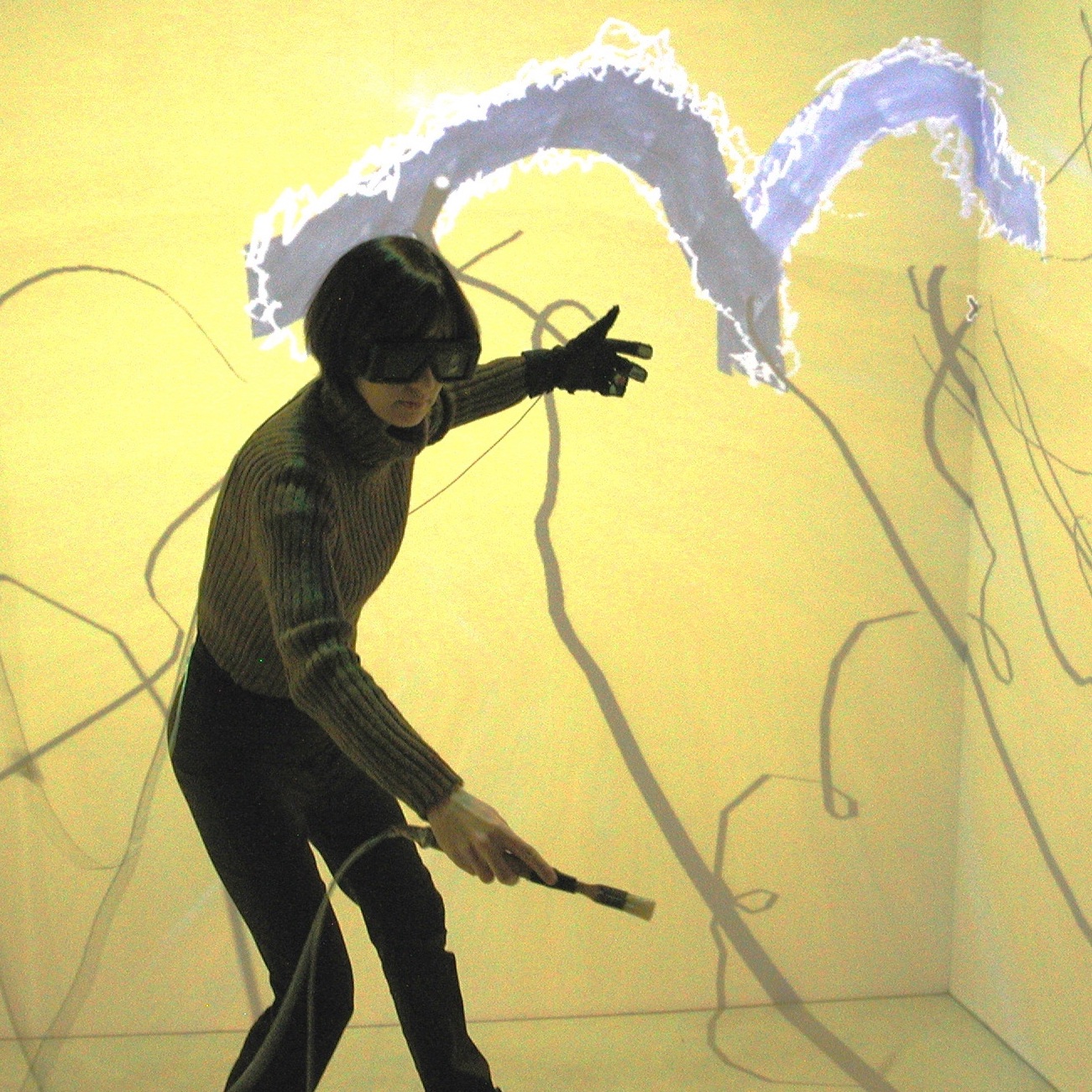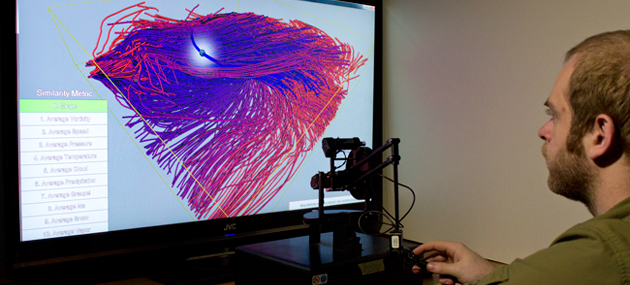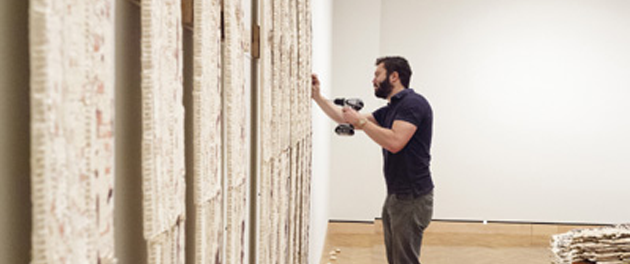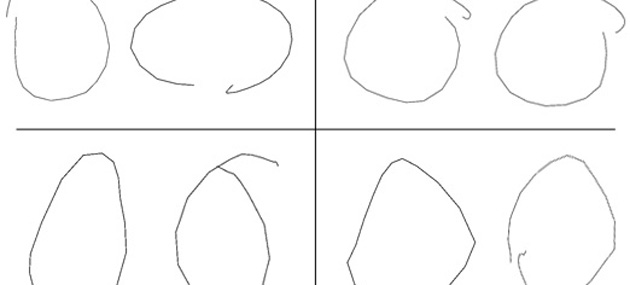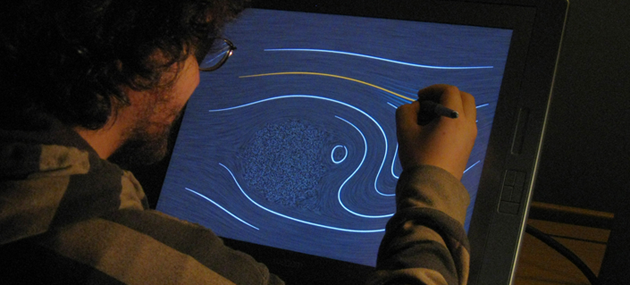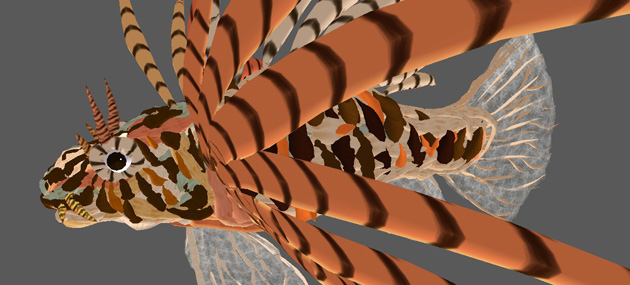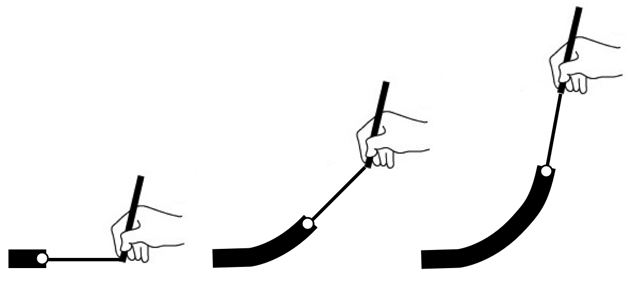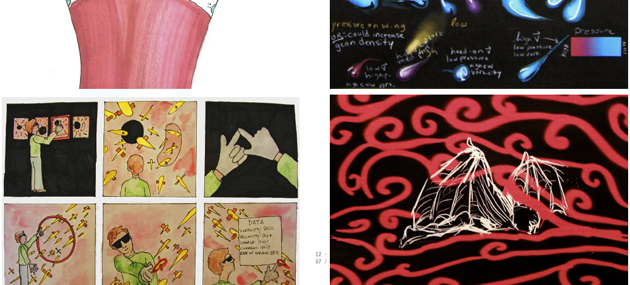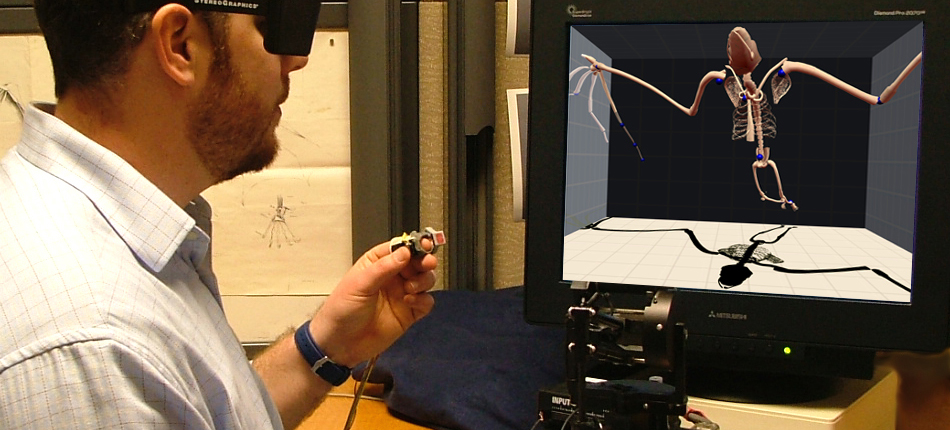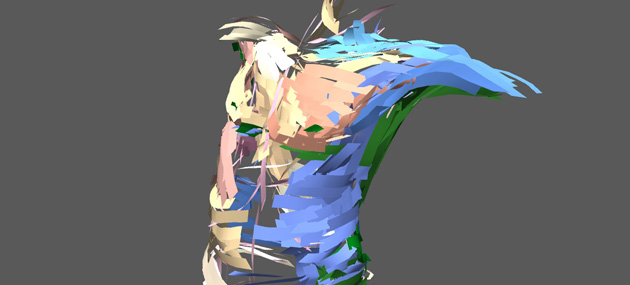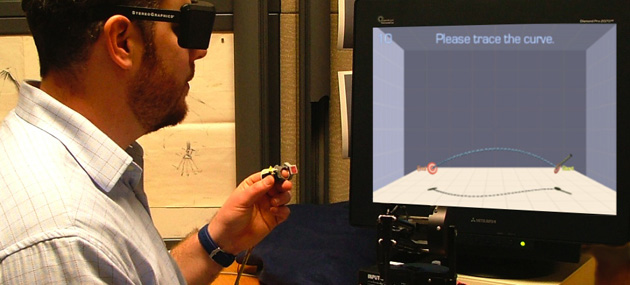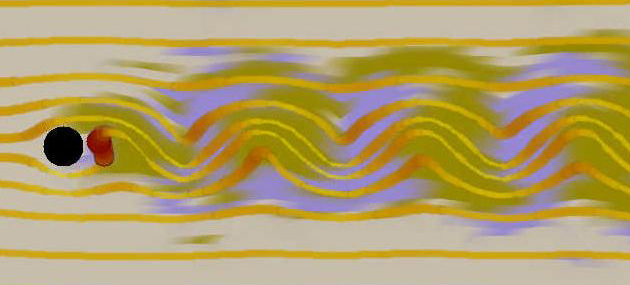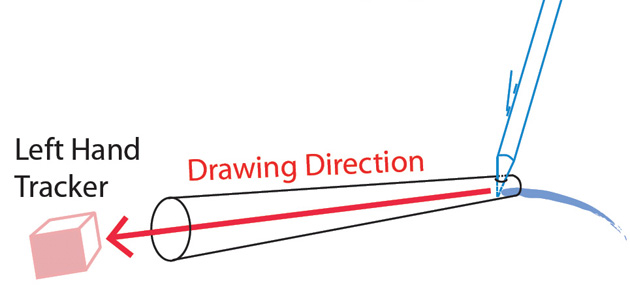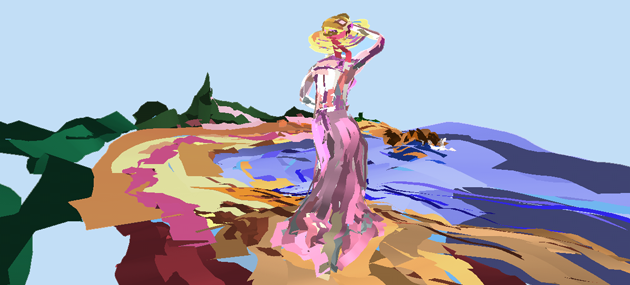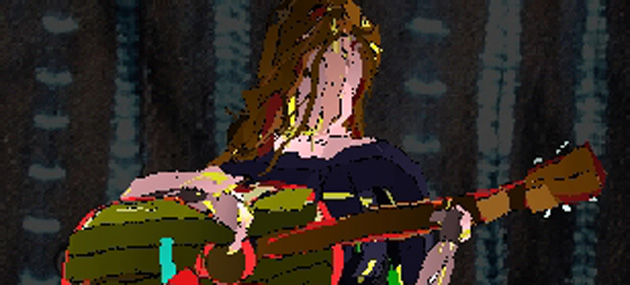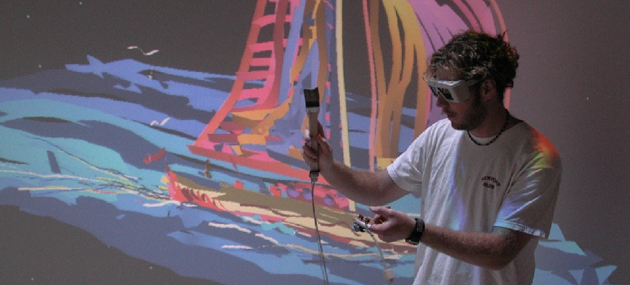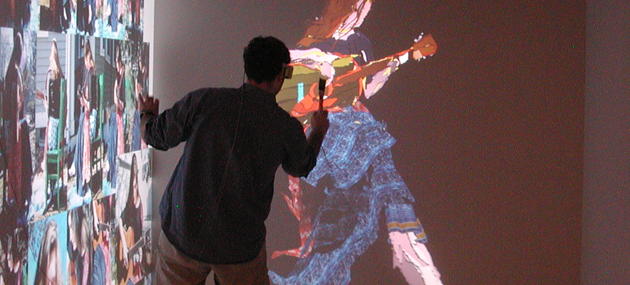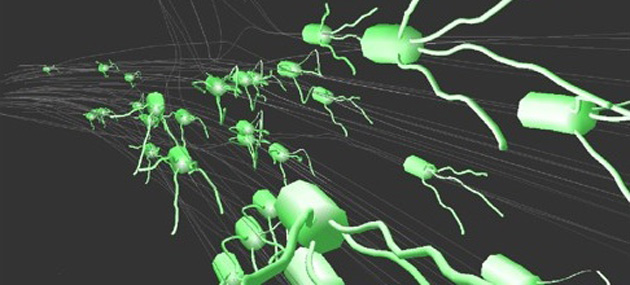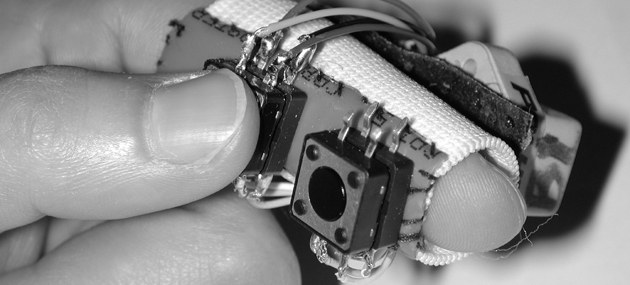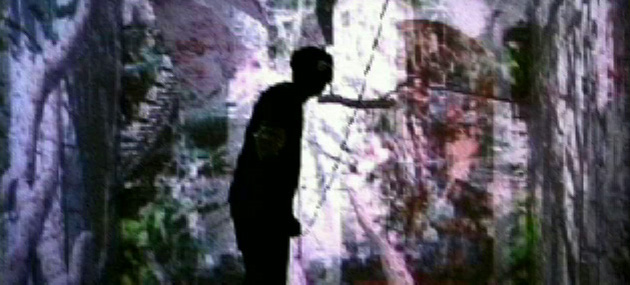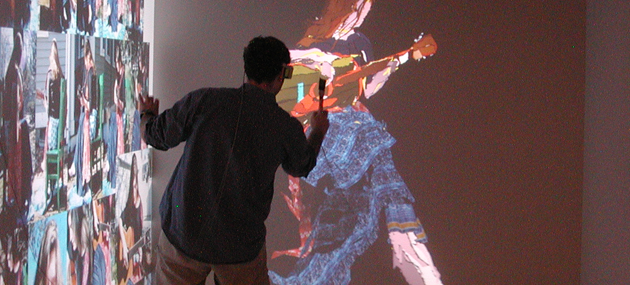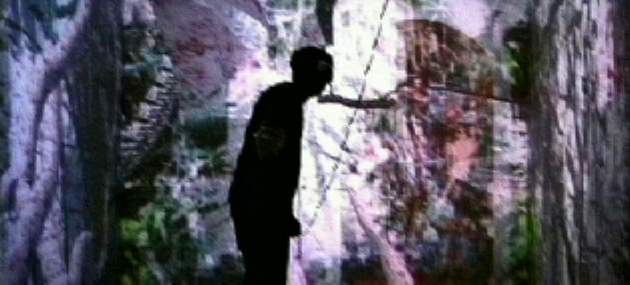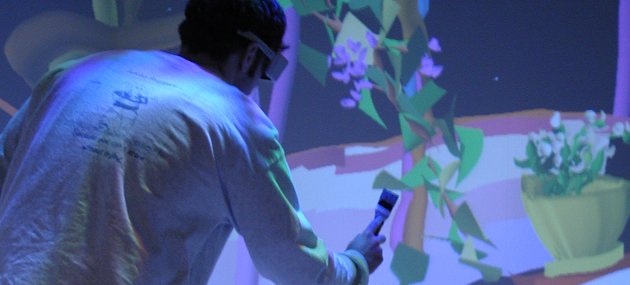
3D Painting
AR/MR/VR Tools for Free-Form 3D Artistic ExpressionOverview
Todo.
Major Systems
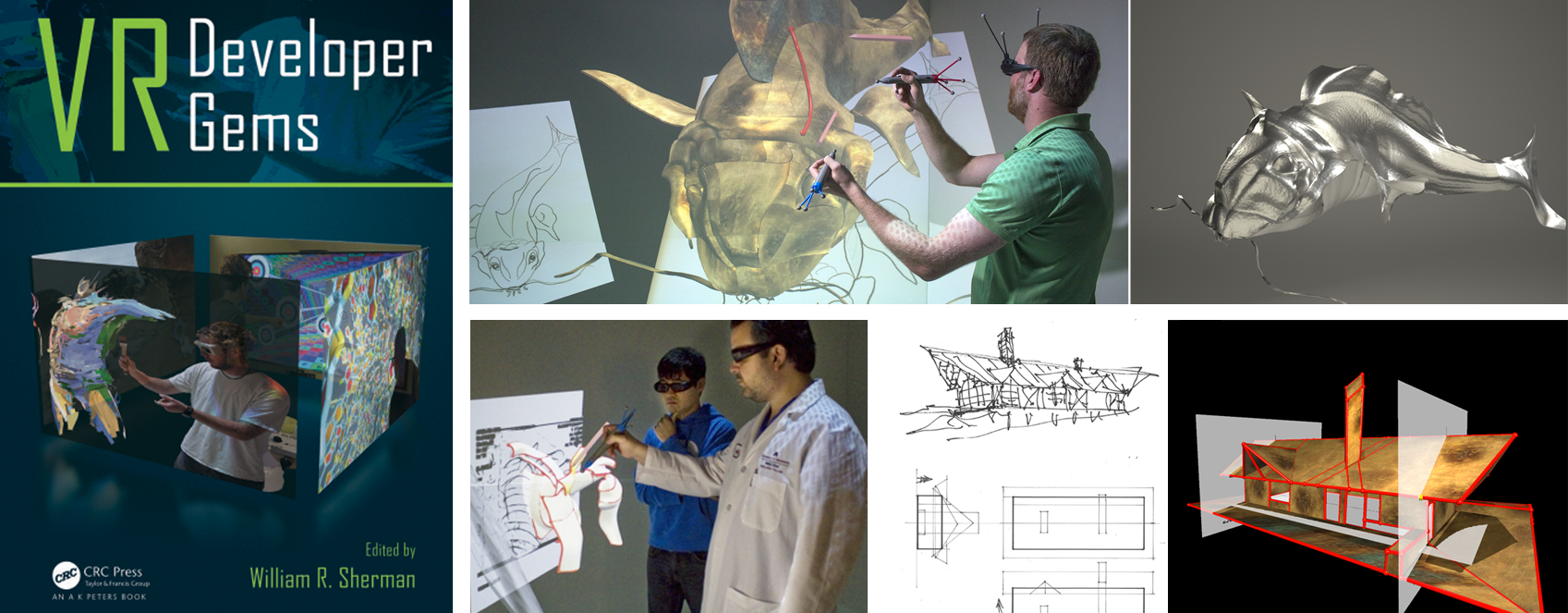
Lift Off
Todo.
Drawing on Air
Drawing on Air is a free-from 3D modeling system that uses a new haptic-aided input technique for drawing controlled 3D curves through space. Drawing on Air addresses a control problem with prior 3D modeling approaches based on sweeping movement of the hands through the air. While artists praise the immediacy and intuitiveness of these systems, a lack of control makes it nearly impossible to create 3D form beyond quick design sketches or gesture drawings. Drawing on Air introduces two new strategies for more controlled 3D drawing: one-handed drag drawing and two-handed tape drawing. Both approaches have advantages for drawing certain types of curves. Drawing on Air also introduces a tangent preserving method for transitioning between the two techniques while drawing. Haptic-aided redrawing and line weight adjustment while drawing are also supported in both approaches. Drawing on Air has been used for both art practice and scientific sketching applications.
CavePainting
CavePainting is an artistic medium that uses a 3D analog of 2D brush strokes to create 3D works of art in an immersive virtual reality Cave environment. Like charcoal lines or paint strokes, these 3-dimensional marks are a fluid, highly flexible visual language that is brought to life by an interface responsive to the artist. The virtual reality interface is composed completely of physical props and gestures.
Creating in CavePainting is a new way of working and thinking. While a painter often steps back from his work or a sculptor steps around his work or even holds it in his hand, a CavePainter stands up and walks through his work, grabs and rotates it in his hand, shrinks or enlarges it on a whim, and finally manipulates color variations and stroke size, shape, and placement to create a visual representation for complex forms. Many of these operations have no counterpart in the physical world, thus they allow interactions and make possible the creation of a form that would otherwise not exist. For example, paint strokes would not be able to float or co-inhabit the same volume in the physical world.
Artists are excited about this new form of art and the full-body experience of creating it. CavePainting inspires playfullness, exploration, and creativity. While creating with the system, artists fill the Cave with their movements, dancing and painting to music or lying down on the floor and painting while looking up at the projection surfaces are common activities.
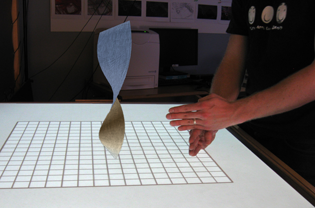
Also presented at the Best of IEEE VR session at SIGGRAPH 2016
Keynote Address
(Tech-note acceptance rate: 23%)

